Must-Know Furniture: Get Close With a Tête-à-Tête
http://decor-ideas.org 12/16/2014 06:13 Decor Ideas
With the holiday party season in full swing, I’m reminded why the tête-à-tête is the perfect party seating. You’ve probably sat next to a friend on a crowded sofa and struggled to talk without wrenching your neck to one side, or you’ve curled up at the sofa end to attempt to make eye contact. Mix in some hors d’oeuvres and you’ve got a clumsy mess on your hands. But with a tête-à-tête, there’s no need to sacrifice comfort for conversation.
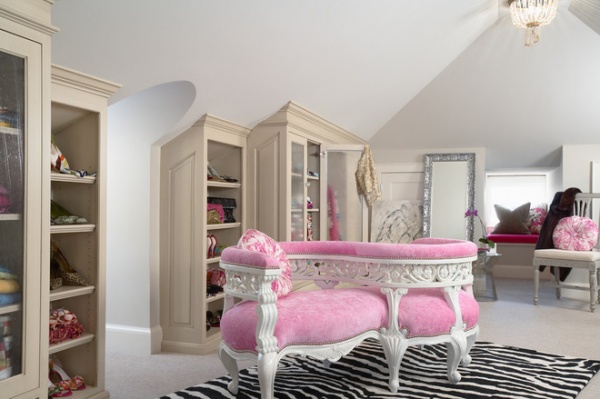
“Tête-à-tête” literally means “head-to-head” in French, and the seating creation allows just that. Its S-shaped, serpentine form encourages two people to face each other and engage in conversation, yet still be visually tied to their surroundings.
Created in the 19th century, the tête-à-tête is known by many names, including gossip’s chair, vis-à-vis and indiscret (so-named to thwart indiscreet eavesdroppers.) In addition to allowing conversation, it tradtionally allowed courting couples to make eyes at each other without actually touching. No canoodling here!
While a traditional tête-à-tête is composed of two single seats with a frame barrier between them, as shown here, other configurations mimic the concept but may not include the dividing frame, like a tête-à-tête lounger, which is basically a chaise longue with two facing but opposing “heads.”
Here’s how you can make one work in your home.
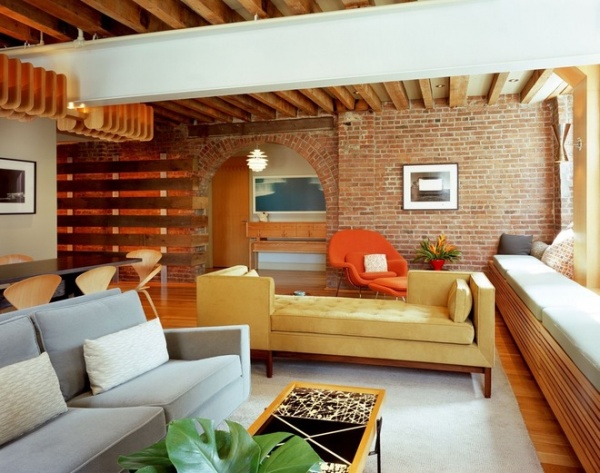
Pros of the Tête-à-Tête
It can create a furniture bridge. Because of its dual orientation, a tête-à-tête can act as a bridge between two seating groups. It links an entire room together, with a focus on inclusivity rather than creating separate seating zones.
Here a tête-à-tête bridges two seating groups in a large living room. A traditional sofa in place of the tête-à-tête would have divided the space into distinct halves, and the farthest seating area would have become separated from the rest of the room.
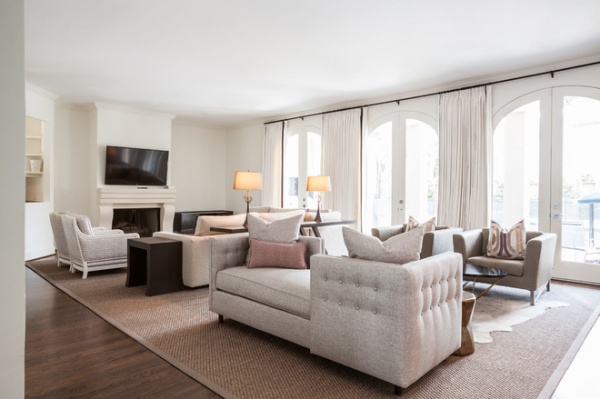
Catherine Solomon of Laura U says that an elegant tête-à-tête works well in formal living areas in lieu of a standard couch and helps anchor a grand room.
For the project shown here, Solomon says the client requested a second seating area to create an open feeling between the great room and the adjacent kitchen. This piece, the Andante Button Tete a Tete from Kravet, is a “fresh alternative to the classic settee,” she says.
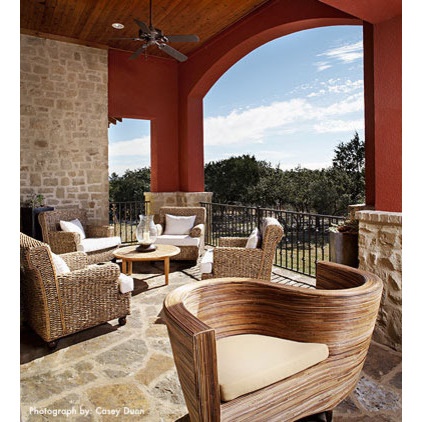
Doing double duty in the orientation department is especially advantageous if you have a great view you want to capitalize on, as shown here.
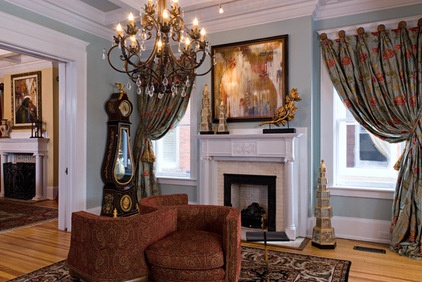
It can be a conversation piece. Interior designer Jennifer Stoner says this three-seat tête-à-tête from Century Furniture is a “great conversation piece, both literally and figuratively.” Because this room is the first you see after entering through the front door, Stoner says she wanted a piece that would make a statement. “It has become the piece that my clients’ guests fight over during parties,” she says.
An antique piece that’s been refurbished and upholstered makes for an even richer story.
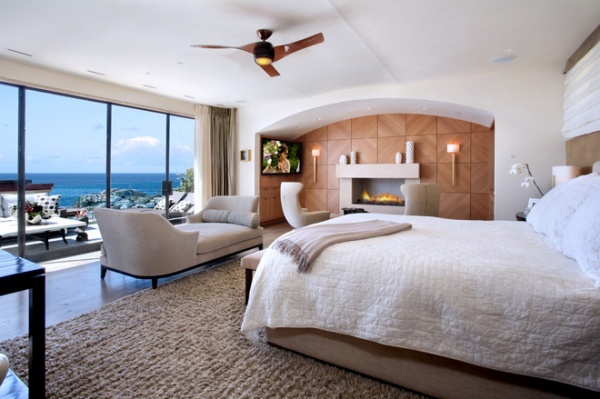
Cons of the Tête-à-Tête
It requires more space than you might think. Tête-à-têtes vary from love seat size to full-length-sofa size. Despite their seemingly “normal” size, they require access space on both sides. So you need to make sure you have the space to accommodate this piece. Many spaces simply aren’t large enough or have a challenging configuration.
Ideally, you want to leave 3 feet of clear floor space on each side for passage, but 1½ feet would pass as a bare minimum. So for simplicity’s sake, a 3-foot-deep tête-à-tête would require space between 6 and 9 feet deep. The tête-à-tête lounger shown in this ample-size bedroom has plenty of space around it.
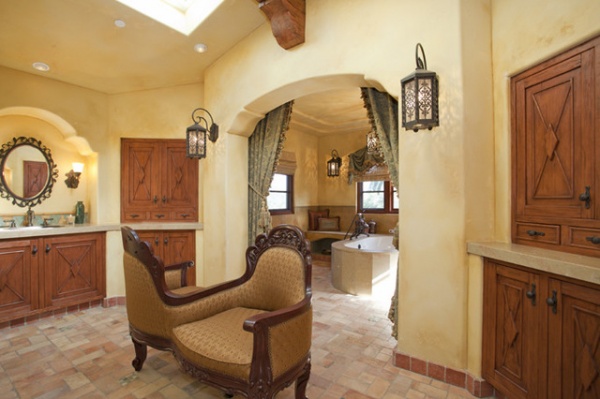
It might need more door clearance. One thing I like about sectional sofas is that they’re usually easy to fit through the door, because they come in pieces. However, maneuvering a tête-à-tête, with arms, legs and seat backs protruding on both sides, can certainly be tricky.
If you’re planning to purchase a new piece, check with the manufacturer for the minimum approach and clearance requirements. If you’re unsure about your space, be sure to check measurements carefully before you buy.
Also be sure to consider your passageway past the entry door to the piece’s destination. It may include a staircase or hallway that’s too narrow. Some furniture movers can negotiate small areas like the nimblest of ballerinas, but others are all thumbs.
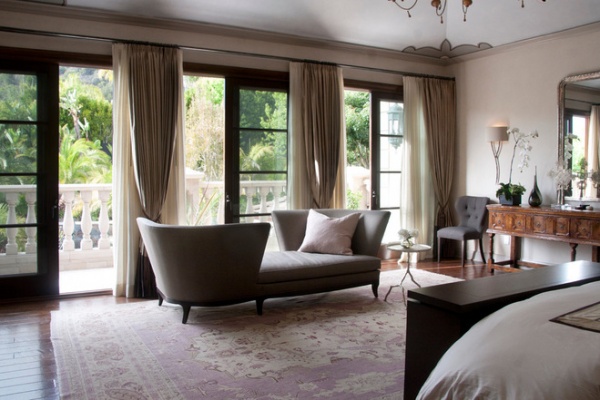
Upholstery limitations. Tête-à-têtes tend to have solid or small-scale-patterned upholstery fabric, so your favorite large-scale ikat isn’t likely going to work. Donghia, the manufacturer of this streamlined tête-à-tête, specifically recommends avoiding stripes. And larger repeat patterns should be avoided for intricate tête-à-têtes. “It would likely get chopped up and look too piecey,” Stoner says. Instead, go with tighter patterns so the repeat is not so obvious or important.
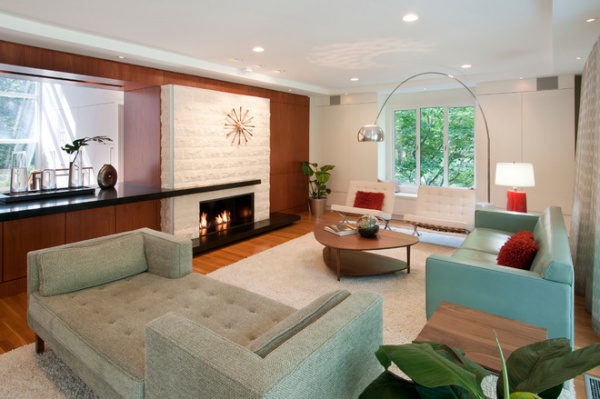
Styles
Though tête-à-têtes are steeped in history, don’t think you need a traditional-style home dripping in brocade for one. These versatile pieces come in all styles.
Midcentury modern. The tête-à-tête has made a big appearance in the the midcentury modern resurgence. In particular the tête-à-tête lounger, with its blocky, planar form, works very well with the midcentury modern aesthetic, as seen in this swank living room.
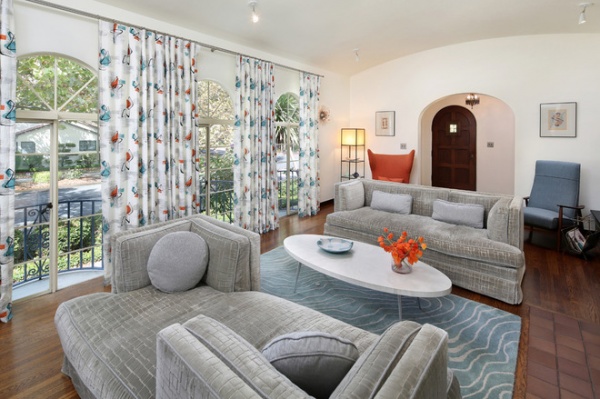
Melina Copass of Melinamade Interiors effortfully mixed vintage midcentury modern pieces with a custom-made tête-à-tête here. Copass says this living room is long and narrow, and the tête-à-tête creates combination seating for the fireplace and the adjacent TV wall.
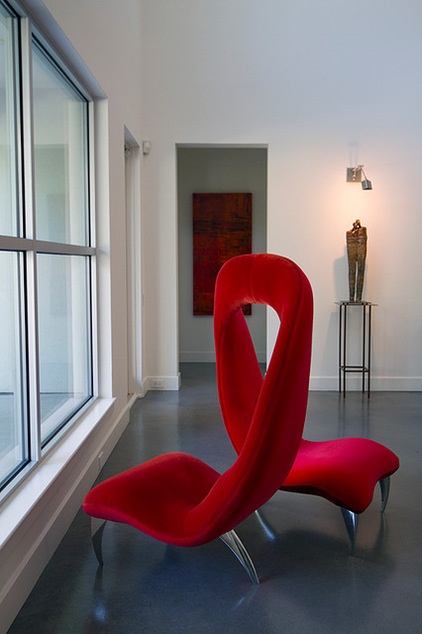
Contemporary. Like a flowing band of ribbon, this tête-à-tête is a dynamic art piece in and of itself.
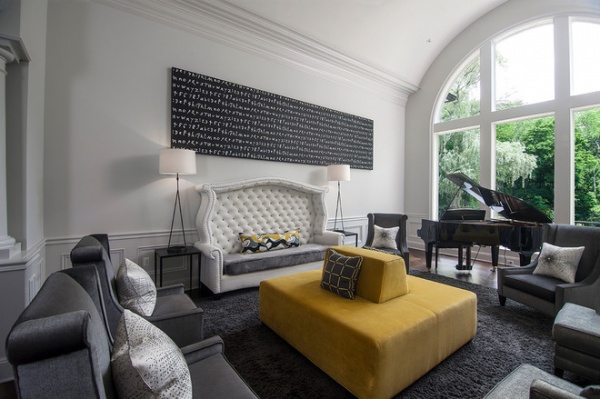
While technically called a dos-a-dos, this contemporary piece is similar to a tête-à-tête in that it offers seating with different orientations. Instead of facing one another, the sitters have their backs to one other.
Upholstered in gold velvet and centrally located, the piece here provides this contemporary living room with a powerful punch.
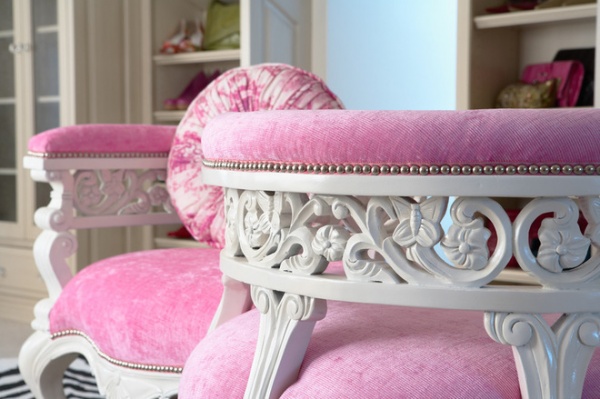
Traditional. This example is a traditional tête-à-tête design, as its frame separates the two seating areas.
The painted, carved wooden frame with cabriole-style legs fetchingly contrasts to the bubblegum-pink fabric and traditional nailheads. The piece has found a perfect home in this closet.
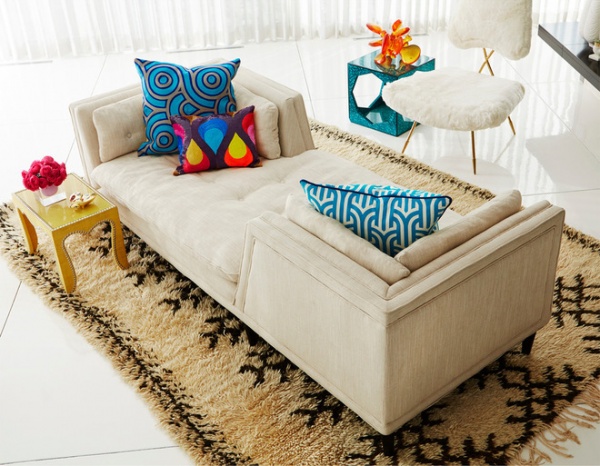
Finishing touches. While the shape of a tête-à-tête is noteworthy, finishing touches can add even more appeal. I like the self-welting on this Arden tête-à-tête by Jonathan Adler. Lining the top, sides and bottom, it reinforces the crisp linearity of the seat’s shape.
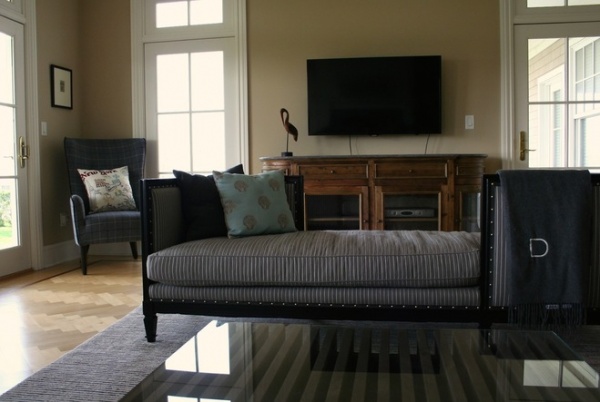
Punctuating the dark frame like a staccato rhythm, the spaced nailheads finish off this handsome tête-à-tête.
More:
Decorating 101: How to Shop for Furniture
A Designer’s 8 Go-to Decor Pieces
Tell us: Do you own a tête-à-tête? If not, would you welcome one into your home? Share your thoughts in the Comments.
Related Articles Recommended












